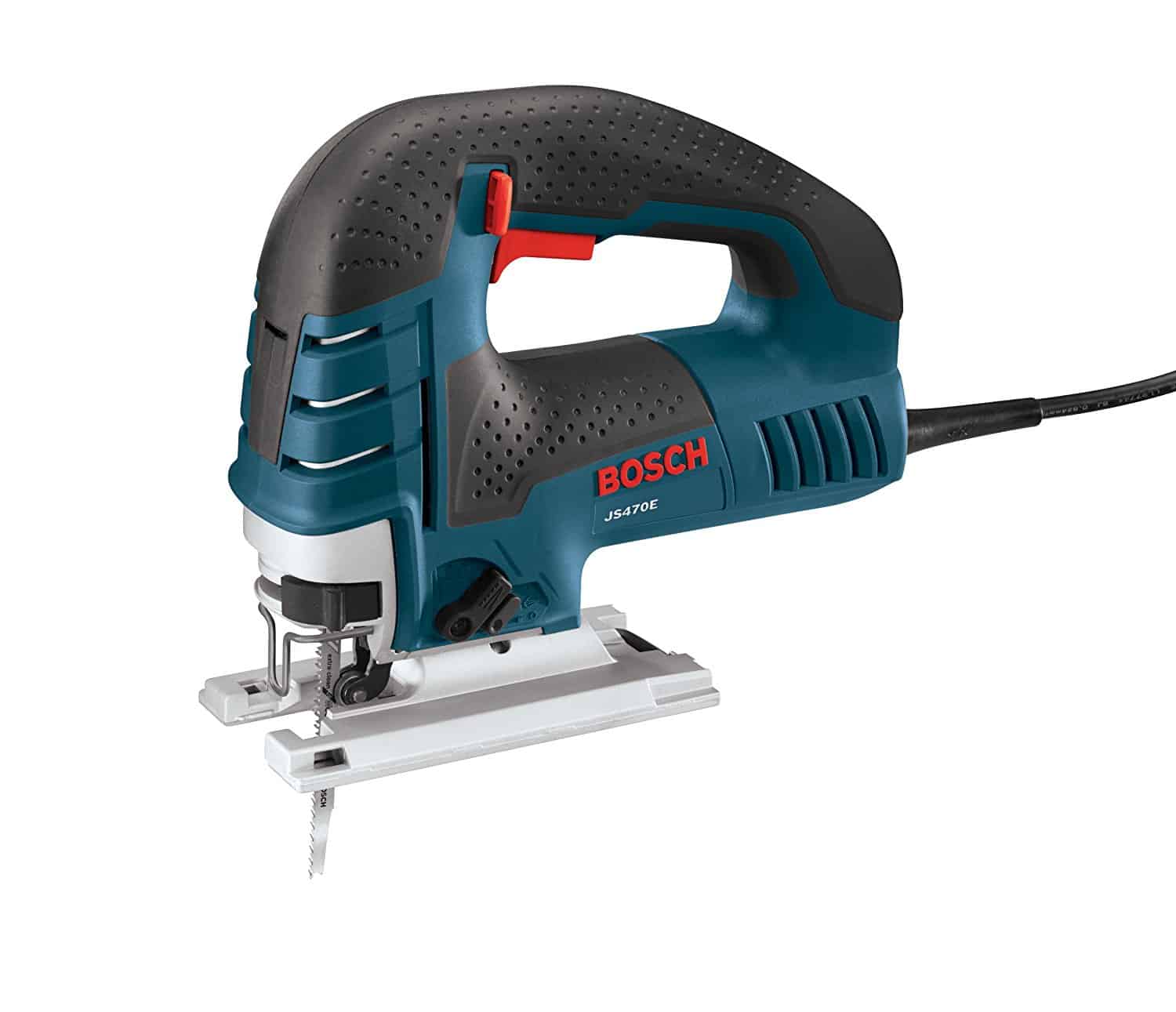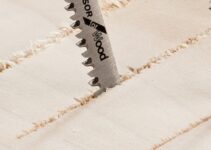Are you looking for ways to make your woodworking projects easier? Jigsaws offer comfort and precision helping you cut any pattern with ease.
In this guide, we’ll provide tips and advice on how to use a jigsaw effectively! You’ll be crafting masterpieces in no time.
The jigsaw is a versatile tool used for woodcutting and intricate designs. With its small size, adjustable blade guard and compact design, the jigsaw can make cutting wood much easier than with traditional saws.
This guide will provide an overview of the basic facets of operating a jigsaw and offer tips on how to best use it for cutting wood in a variety of shapes. We will also discuss safety measures to take when cutting with a jigsaw. With the right techniques, you can make efficient and accurate cuts that will help you create beautiful woodworking projects.
Explanation of what a jigsaw is
A jigsaw is a tool commonly used in woodworking and metalworking projects. It is designed with a narrow blade that allows it to be used for curved cuts and specialized shapes, rather than for the more traditional straight-line cuts employed in saws such as table saws or circular saws. The jigsaw typically has an adjustable footplate which allows you to safely control the depth of your cuts and make precise adjustments as needed.
Though its motion is similar to that of a hand saw, it is powered electronically, either with battery or mains electricity. It can be used with a variety of blades enabling it to cut through almost any material including plastics, metals and woods of different densities and thicknesses. In addition, jigsaws come in both corded and cordless varieties making them versatile enough to use on site or in busy workshops – great for those who are starting out on their woodworking journey!

Importance of a jigsaw for woodworking projects
A jigsaw is an essential tool for woodworking projects, with several advantages making it the ideal choice for an array of applications. A jigsaw has a tremendous amount of control and accuracy compared to a circular saw or other cutting tools, giving woodworkers the ability to achieve precise cuts and detailed patterns. The nature of the blade enables intricate curves and shapes to be cut quickly with ease.
This type of saw also offers considerable power and speed, allowing you to make relatively large cuts in a wide variety of materials such as hardwood, softwood, particleboard, plastics and even sheet metal. The adjustable stroke height also provides improved performance depending on what job you are doing. The blade can be reversed to cut in both directions which gives you even more flexibility when working with different materials.
The use of a jigsaw allows you access to area which otherwise would not be possible with circular saws which require an open work space for operation, since the size and shape of the base enables it to reach into tighter spaces than larger tools such as table saws or radial arm saws. Jig saws can also help reduce dust levels in your workshop because they create relatively little due to their quick cutting action.
Choosing the Right Jigsaw
Choosing the right jigsaw for your project is essential if you want to achieve a good result. Here are some factors you should consider when selecting a jigsaw:
Power: The amount of power needed will depend on the material you’re cutting and the size of the cuts you’ll be making. A higher-powered motor will get the job done faster, but it may also cost more.
Speed Range: Look for a jigsaw with variable speed control that allows you to adjust your cutting speed based on the material and size of your project. This will help optimize efficiency and ensure that your cuts are accurate and precise.
Vibration: Low-vibration saws may be more expensive than those with higher vibration, but they can be significantly easier to use. The reduced vibration helps minimize fatigue during extended periods of use and ensures a smooth, controlled cut through any material.
Orbital Action: This feature allows the blade to move up and down as well as side to side while cutting, giving smoother edges and reducing tear-out in thicker materials. Some models offer different levels of orbital action, so choose one that fits your needs best.
Noise Level: If you need to make cuts in close quarters or where noise needs to stay within acceptable limits, look for a model with lower noise levels. Jigsaws don’t typically get very loud, but some are noticeably quieter than others.
Factors to consider when choosing a jigsaw
When selecting a jigsaw for woodworking projects, there are several factors to consider. Firstly, manual or electric? Manual jigsaws offer the advantage of portability and an easy to use motion when starting and finishing cuts, but electric jigsaws have greater power and are excellent for intricate designs or longer cuts.
The type of blade used affects the performance of the saw as well; depending on the job you intend to do and what type of wood you’ll be working with, there are specific blades available in a variety of shapes, sizes, and materials. For light-duty sawing like making plunge or curved cuts in thin woods like plywood or pine boards, you should use smaller blades with fewer teeth than for heavier workloads such as cutting thick hardwood boards.
When selecting an electric jigsaw, look at its wattage; higher wattage means more power so you can make deeper or longer cuts with ease. Other features such as variable speed control can give you more precision control over your project while an adjustable footplate helps to ensure safe cutting angles. Finally, consider how comfortable it is to hold the saw while making your cut with comfortable grips and thumb rests that let you apply more pressure when needed.
:max_bytes(150000):strip_icc()/fotostormjigsaw-5be7038746e0fb0051a20fa2.jpg)
Preparing for Use
Before cutting with a jigsaw, it is important to have some knowledge and practice cutting wood manually. Here are some helpful tips to get you ready for your woodworking project.
- Read the manual: Being familiar with the jigsaw’s components and the proper usage of it is an essential first step. Knowing what all of the parts are used for can help you operate it more safely and efficiently.
- Choose your blade: Depending on the project, select a different type of blade with varying thickness and shape to achieve optimal results. Be sure to take into consideration factors like material thickness, direction of cut, and speed setting when making your selection.
- Maintain tension: Ensure that there is sufficient tension applied to the jigsaw’s blade so that it does not bend or break due to inconsistent power or pressure. Do this by tightening up any screws on the jigsaw before using.
- Setup stable work surface: To prevent slippage or unsafe movement make sure that you are working on a stable, level surface such as a workbench or table saw stand.
While using a jigsaw can be tricky at first, by understanding its parts and features as well as having practice cutting straight lines in scrap wood can make you comfortable taking on bigger projects with precision accuracy!
Assembling the jigsaw
Before beginning any woodworking project, proper jigsaw assembly is key to ensuring safe operation and accurate results. Begin by attaching its base plate to the machine. It’s usually connected by screws that may be found on either side of the tool. It’s important to familiarize yourself with the shape and size of the base plate as it plays an important role in determining cutting accuracy (recall that the larger and longer it is, the more support it provides).
Next, fit a jigsaw blade into its guide pipe which attaches to a slot on one side of the base plate. To secure it in place, insert two or three retaining pins or set screws through holes near the blade end of the guide pipe into small openings on each side of base plate. The pins should just be tight enough to prevent slipping— you do not need to tighten them too much as this can damage both parts.
Finally, depending on your model, adjust the cutting speed if necessary by rotating a control knob or pushing a button at its sides; slower speeds are used for making curved cuts while faster speeds can be used for straight lines and slots. Once your jigsaw is properly assembled and you have tested its operation with some scrap wood pieces first, you are ready to start your projects!
Selecting the appropriate blade for the task
The type of jigsaw blade you use is determined by the material you are cutting and the shape you are trying to achieve. To get the most out of your jigsaw, it’s best to understand the properties of different materials and how they respond to various blades.
When working with wood, selecting the appropriate blade for your machine is critical for ensuring a safe, clean cut. For straight cuts, a wide blade with larger teeth will do the job. If you’re making curved or intricate cuts, look for narrower blades with finer teeth that can help reduce splinters and chipping. Most standard woodworking blades have 6 to 10 TPI (teeth per inch), but blades up to 14 TPI can produce incredibly precise cuts that require minimal sanding afterward.
Metal cutting blades should be used only on softer metals like aluminum or copper. Harder materials such as steel require much more torque than most handheld jigsaws can support without overheating or stalling, so they should not be attempted unless absolutely necessary. Most metal cutting blades have fewer teeth per inch than standard woodworking blades (usually 4–8 TPI), which helps reduce friction during use — but always refer to your manufacturer’s instructions before selecting a blade for any task other than woodworking!
Adjusting the blade angle and speed
When using a jigsaw, you might need to adjust the blade angle for different cuts. This is especially important for tight corners and compound angles. To ensure that you adjust your jigsaw correctly, make sure to follow the directions in your owner’s manual.
You should also be aware of the various speeds available on your jigsaw. When cutting wood, you’ll typically need a faster speed setting. However, if you’re working with metal or plastic, you may need to slow down the blade speed to prevent burning or melting the material. As a general rule of thumb, lower speeds should be used for harder materials with higher speeds for softer materials. Be sure to read and follow all instructions provided in your Owner’s Manual before using a jigsaw so that you are familiar with its operation and can use it safely and correctly.

Conclusion
Many woodworking enthusiasts rely on a jigsaw for a variety of projects, from basic cuts and curves to more complex designs and decorations. With the proper guidance, this inexpensive and versatile power tool can be used effectively to meet all your cutting needs.
The key is in being familiar with the basics of using it and exercising caution when following more advanced techniques. By taking the time to learn how to use it safely and effectively, you can save both time and money as you work on your woodworking projects.
FAQS
What setting should a jigsaw be on for wood?
The setting for a jigsaw when cutting wood depends on the thickness and density of the wood. In general, a medium speed and a blade with a medium TPI are good starting points.
What are the most important things to consider when using a jigsaw?
The most important things to consider when using a jigsaw are safety, the material being cut, the blade being used, and the cutting technique.
How do you use a jigsaw effectively?
To use a jigsaw effectively, select the appropriate blade and speed, mark the cutting line, secure the material being cut, and use a steady and controlled motion while cutting.
What to do before using a jigsaw?
Before using a jigsaw, ensure that the blade is properly installed and tightened, and that the material being cut is securely clamped in place. Wear appropriate safety gear, such as eye protection and gloves.
What thickness of wood will a jigsaw cut?
A jigsaw can cut wood up to a certain thickness depending on the power of the tool, the type of blade used, and the material being cut. In general, a jigsaw can cut wood up to 3 inches thick.
Can you cut wood straight with a jigsaw?
Yes, a jigsaw can cut wood straight with the use of a guide or by carefully following a marked line.
What side of wood do you cut with a jigsaw?
When using a jigsaw, it is recommended to cut on the side of the wood where splintering is less likely to occur, which is typically the side facing down.
Should jigsaw be slow or fast?
The speed of a jigsaw depends on the material being cut and the blade being used. In general, a slower speed is better for harder materials, while a faster speed is better for softer materials.
What color jigsaw blade for wood?
A jigsaw blade with a color code of blue or black is typically recommended for cutting wood.
How do you use a jigsaw in the middle of wood?
To use a jigsaw in the middle of wood, drill a starter hole at the center of the cut, insert the jigsaw blade, and carefully follow the marked cutting line while maintaining a steady and controlled motion.
See Also:
- Best jigsaw blades for plywood
- Best jigsaw blades
- Best jigsaw for cutting curves
- Best jigsaw for woodworking
- Best jigsaw under 100


